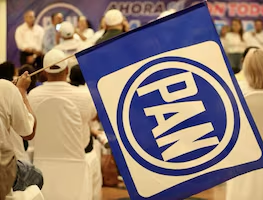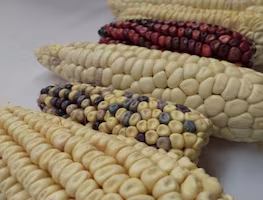Más Información

FGR investiga a "todos los involucrados" en homenaje a "El Mencho" en Coalcomán; indaga posibles vínculos con el CJNG

Alejandro Moreno critica gestión económica del gobierno federal; denuncia "gasolinazos" y advierte aumento al precio de la tortilla

Aseguran armas, drogas y hasta televisores durante operativo en penal de Puerto Vallarta; reubican a 5 reos

Académico de la UNAM alerta sobre generación de ozono por evaporación de gasolinas; pide regular la captura de vapores

"Grave error" dejar a Marko Cortés como líder en el Senado, advierte Adriana Dávila; PAN debe desligarse de liderazgos fallidos, afirma
At least six drug cartels are involved in drug trafficking operations, kidnapping , and extortion in Chiapas . Moreover, authorities in the southern state have identified the presence of gangs MS-13 , Barrio 18 , as well as five subversive groups.
In an intelligence report, the federal government reveals that the Sinaloa Cartel and the Jalisco Nueva Generación Cartel are fighting to control the townships located near the coast and those near the border with Guatemala , which is strategic for their criminal activities.
Meanwhile, Los Zetas control the metropolitan area and the center of the state; the Beltrán Leyva Cartel , the Gulf Cartel, and the San Juan Chamula Cartel are also present in some of the 15 areas in the state.
Gilberto Zavala Páramo
works for the Sinaloa Cartel; while José Inés Landero Barrero works for the CJNG. The two Mexican drug cartels are fighting to control Arriaga, Tonalá, Cintalapa, Pijijiapan, Mapastepec, Acapetahua, Villa Comaltitlán, Mazatán, Tapachula, Ciudad Hidalgo, Frontera Comalapa, Motozintla, Siltepec, and Ángel Albino Corzo.
Recommended: The 6 Mexican drug cartels fueling the U.S. drug and opioid crisis
On the other hand, Loz Zetas, led by Adán Juárez Gómez , dominate the metropolitan area, Mezcalapa, Soconusco, the Lacandona jungle, Tuxtla Gutiérrez, Chiapa de Corzo, Berriozábal, Comitán de Domínguez, Las Margaritas, Ocosingo, and Palenque.
Although the structure inside the Beltrán Leyva Cartel has debilitated in recent years, they have deployed several groups led by Marco Antonio Zetina Ricardez , aka “El Zetina,” in Palenque, one of the main routes used by Central American immigrants on their way to the U.S.
According to the official document, the San Juan Chamula Cartel is led by a criminal known as “El Caracol.”
The Gulf Cartel operates on the border with Veracruz and Tabasco.
Furthermore, Mexican authorities have detected the presses of gangs such as Mara Salvatrucha 13 and Barrio 18 , which are involved in homicides and drug sales in Arriaga, Cacahoatán, Escuintla, Frontera Hidalgo, Huixtla, Metapa de Domínguez, Mapastepec, Palenque, Pijijiapan, Ciudad Hidalgo (Suchiate), Tapachula, and Frontera Hidalgo.
Recommended: Mexican drug cartels are using more advanced airplanes to transport drugs
The presence of subversive groups in Chiapas was discovered years ago. Currently, they are present in five indigenous areas.
The document written by federal authorities lists the Zapatista army (EZLN) as one of them. It current operates in Ocosingo, Altamirano, Larrainzar, Chenalhó, Las Margaritas, Altamirano, Tonalá, Palenque, Salto de Agua, Túmbala, and Benemérito de las Américas.
The Popular Revolutionary Army (Ejército Popular Revolucionario) is active in Villaflores, Villa Corzo, La Concordia, Ángel Albino Corzo, Venustiano Carranza, Motozintla, San Cristóbal, Salto de Agua, Altamirano, and Ocosingo.
The Movement for Peace with Justice and Dignity , led by Óscar Sánchez Alpuche, is present in Salto de Agua, Tila, Sabanilla, Túmbala, and Palenque.
The document also mentions the paramilitary group called “ Chinchulines ” and the Independent Regional Farmers Movement ( Mocri ).
gm





